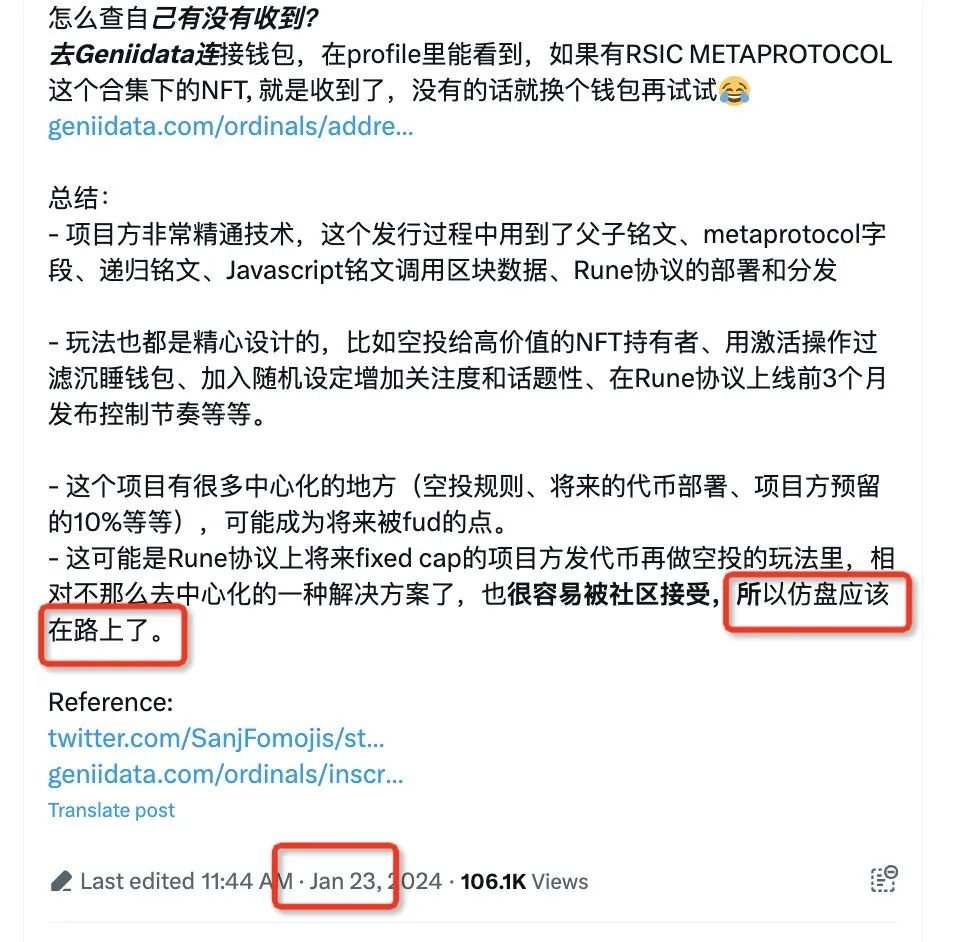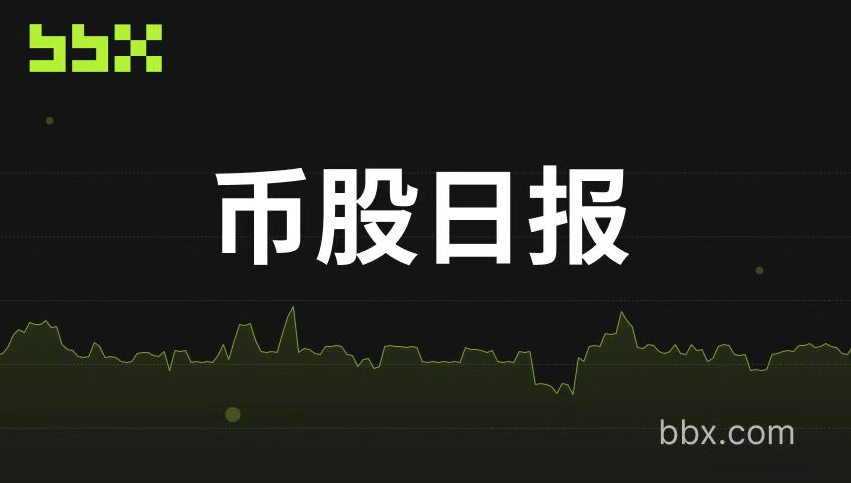First, let's clarify a concept. After the halving block (#840000) and the official launch of Runes on the mainnet, there are two ways to issue Runes runes:
1. Fixed Total (the project directly engraves and distributes all runes), which is a more centralized issuance method.
2. Public Engraving (setting parameters for deploying runes and fair minting), similar to BRC-20. The main difference is that BRC-20 limits the total supply, while Runes limits the block height or timestamp, but does not limit the total supply. The total amount of the rune is determined by how much is engraved during the valid period.
These two issuance methods are obviously completely different and correspond to different cultures and gameplay. Therefore, I personally tend to look at the leading role separately.

Author: Lilyanna Bitlily
X/推: @lilyanna_btc
Why is RSIC considered the "leading role" of the "Runes airdrop gameplay"?
RSIC belongs to the "Fixed Total" category and may be the first Runes project to be issued using a pre-allocated airdrop method. Before the appearance of RSIC, when many people saw the issuance method of "Fixed Total" runes engraved by the project party, their first reaction might be: Isn't this just centralized issuance? Then what's the point of playing, might as well go back to ETH.
But RSIC entered in a very community-oriented way, first giving free airdrops of mining machines to key addresses, and then using a very precise mining method and transparent rules to pre-distribute rune shares. After reading its white paper, I suddenly realized that fixed total Runes runes can be played in this way!
The specific rune allocation rules were detailed in a previous tweet ⬇️
https://twitter.com/lilyanna_btc/status/1749639096853745957
After RSIC, many projects with Runes rune pre-airdrop gameplay appeared (as I mentioned on January 23, the imitation version is already on the way).

However, upon closer inspection, some airdrop rules are single, some turn into NFT gameplay, and the relationship between Runes runes becomes weaker. Some have not even issued certificates until now, lol.
Only RSIC has designed a rigorous and sustainable economic model, allowing RSIC to have investment value at every stage.
Early stage - The psychology of getting in early/activating early to mine for an extra day.
Mid-stage - Announcing the boost gameplay, which sparked a small wave of enthusiasm. Everyone thought, if I engrave a boost acceleration now and then increase my mining machines, it doesn't seem too late.
Late stage - In the late stage, there will be no selling because you have to hold on for the lottery after the halving block. But after the halving block, it's useless, right? Not really. It has been announced that after the halving, RSIC will still have other uses, which will be announced later. So there is a reason why RSIC has dominated several trading markets for so many days!
In addition to the previously mentioned technical proficiency, RSIC also has some small details that I personally like:
In order to maintain the rhythm, the boost was kept secret until later, but the hash of the boost gameplay was included in the white paper for verification after it was announced - Look! I did not tamper with the gameplay; this was the content from the beginning.
After issuing 21,000 mining machines, the project party immediately transferred the parent inscription to Satoshi Nakamoto's address, ensuring that there will be no further issuance.
The 10% reserved by the project party is publicly disclosed, and it is guaranteed that it will not be sold before the halving, rather than secretly hoarding and then selling off. There are many things that the community may not necessarily fud, but the project party is willing to be transparent and not put themselves in any suspicious scenarios. This is the project party's mindset.
Routine reminder: The above is only a sharing of some observations of RSIC by individuals, not investment advice. RSIC is very expensive, so don't buy it.
What does Casey's decision to fix 0-9 runes mean?
The plan to fix the 0-9 runes that Casey collected a few days ago belongs to the second type of gameplay - public engraving. Casey will select 10 runes from the names and issuance parameters suggested by the community as the 0-9 Runes, all of which must be fair minted.
https://twitter.com/rodarmor/status/1756877812013862999
In a sense, this behavior can prevent some very strange or outrageous cases from appearing in the first 10 Runes (such as the leading role being registered by a scientist and leaving a very small number of blocks valid, making it impossible for ordinary users to grab it; or some outrageous names, referring to the #1 ordinals inscription).
The 0th rune is very likely to become the leading role of fair mint (open etching), and it is speculated that Casey will select one with a relatively long valid engraving time, which will not be grabbed within a few dozen blocks.
Specific preparations can be made after Casey announces the rune parameters.
In conclusion, I think that the matter of Casey fixing the first 10 runes should not be interpreted as too sinister. It is only for the protection of the protocol. Moreover, the fair minting of the first 10 runes should not be a reason to fud RSIC, as they were not originally part of the same gameplay.
Some Cold Knowledge
The length of Runes runes will start from 12 or 13 characters, and runes with less than 12 characters are not supported at the beginning.
Runes is not an independent protocol like Ordinals; Runes and Inscriptions are parallel and belong to the Ordinals category. (There is a related question: which team is more technically superior, the runes team or the inscriptions team? Of course, they are equally matched, after all, they are the same team, 23333)
Casey and his buddies are still frantically optimizing the code. Until the halving, the rules I mentioned above about Runes may be changed or optimized by them. Although he has been addicted to playing Baldur's Gate for a few days, he has spent most of his time carefully thinking and polishing Runes.
Runes is a FT token protocol itself and does not support NFT issuance. However, when engraving runes, inscriptions can be included, and there are some interesting logic that can be combined. By the way, blind staking Runestone may become the leading role of the Runes airdrop gameplay. Although the Chinese community currently has a somewhat negative attitude towards it, it is not ruled out that there will be a big turnaround after the issuance is completed. I will write another interpretation of Runestone after it is issued.
Disclaimer: This article is for reference only and should not be used as legal, tax, investment, financial, or any other advice.
免责声明:本文章仅代表作者个人观点,不代表本平台的立场和观点。本文章仅供信息分享,不构成对任何人的任何投资建议。用户与作者之间的任何争议,与本平台无关。如网页中刊载的文章或图片涉及侵权,请提供相关的权利证明和身份证明发送邮件到support@aicoin.com,本平台相关工作人员将会进行核查。




